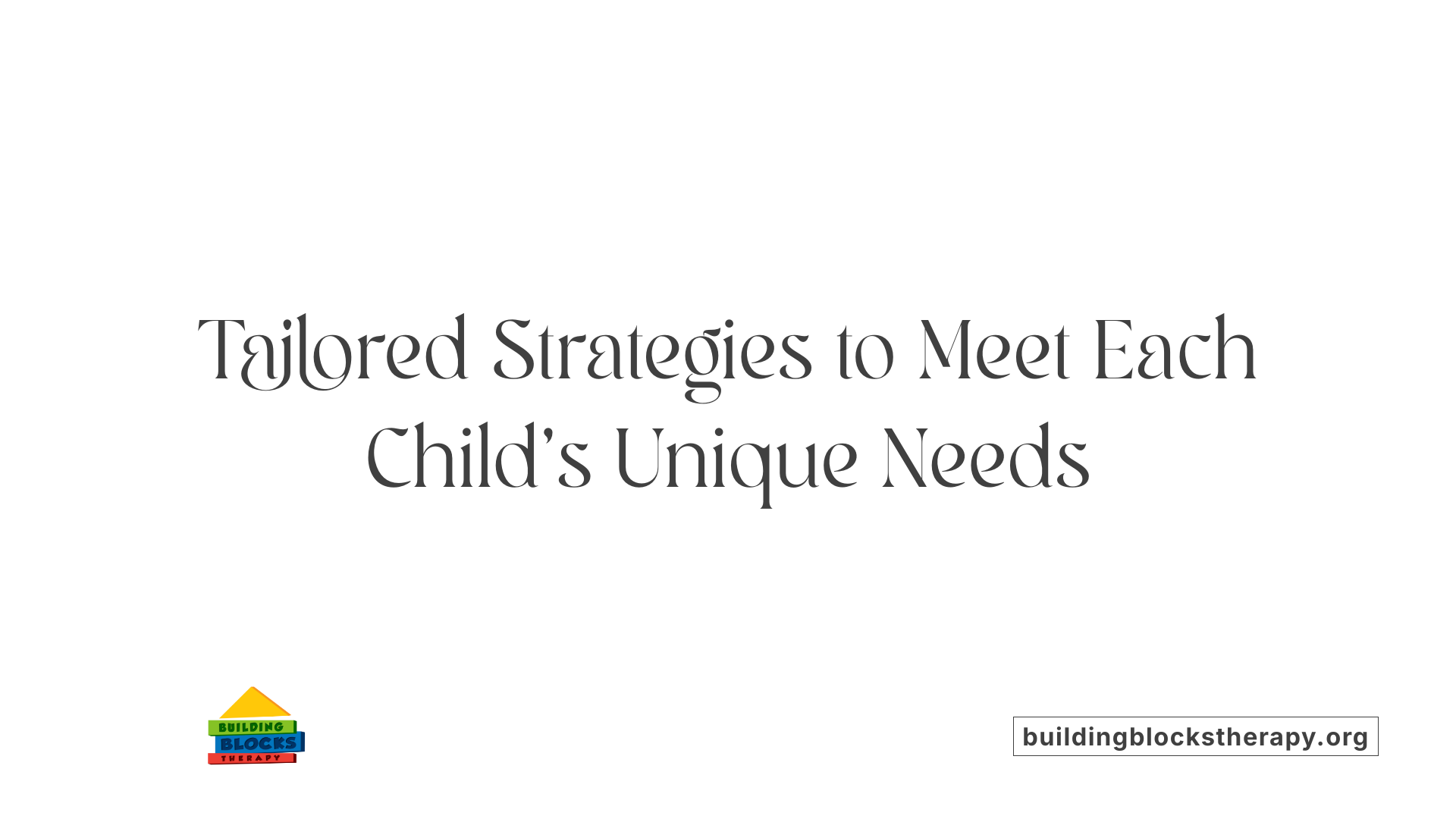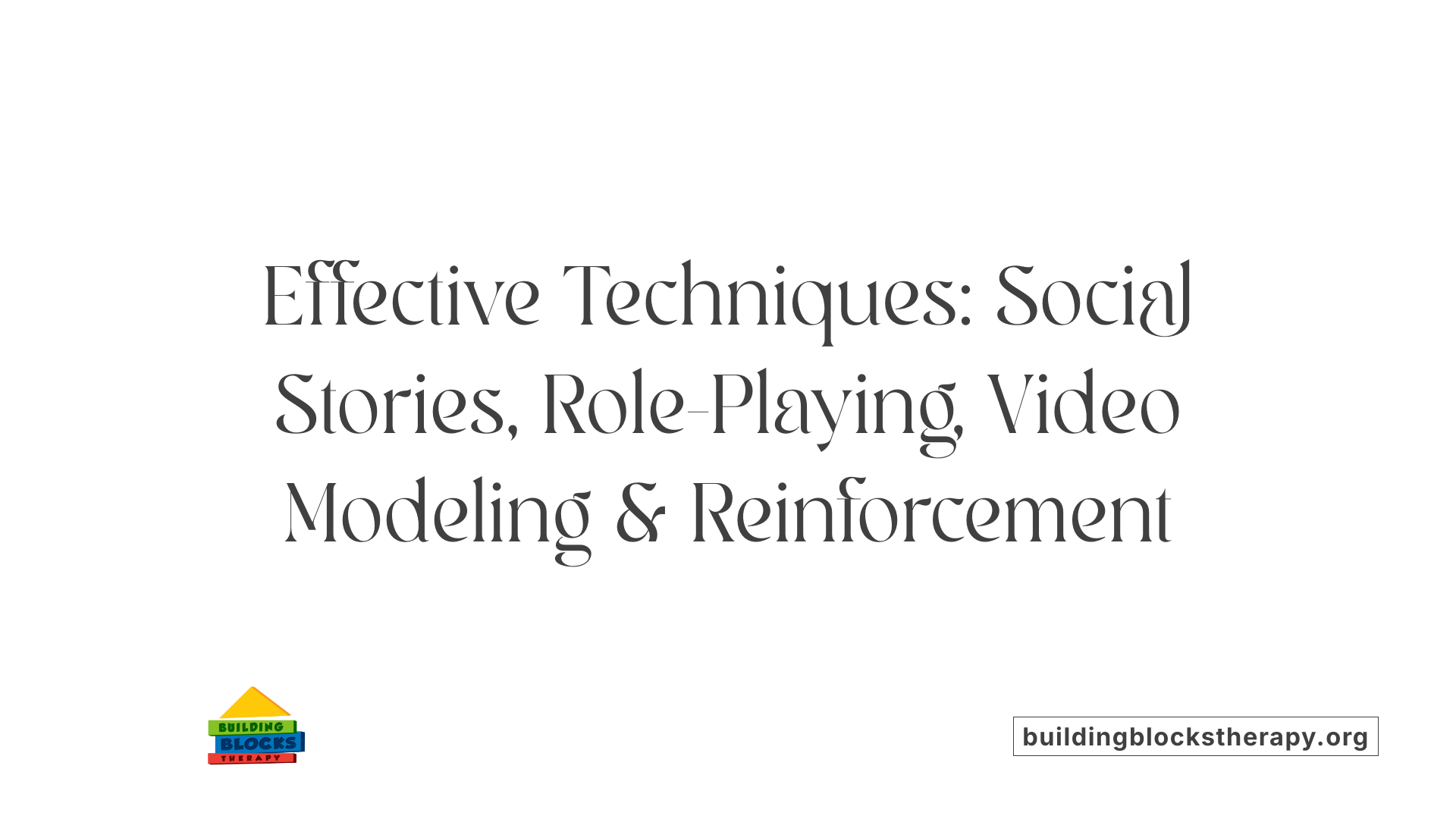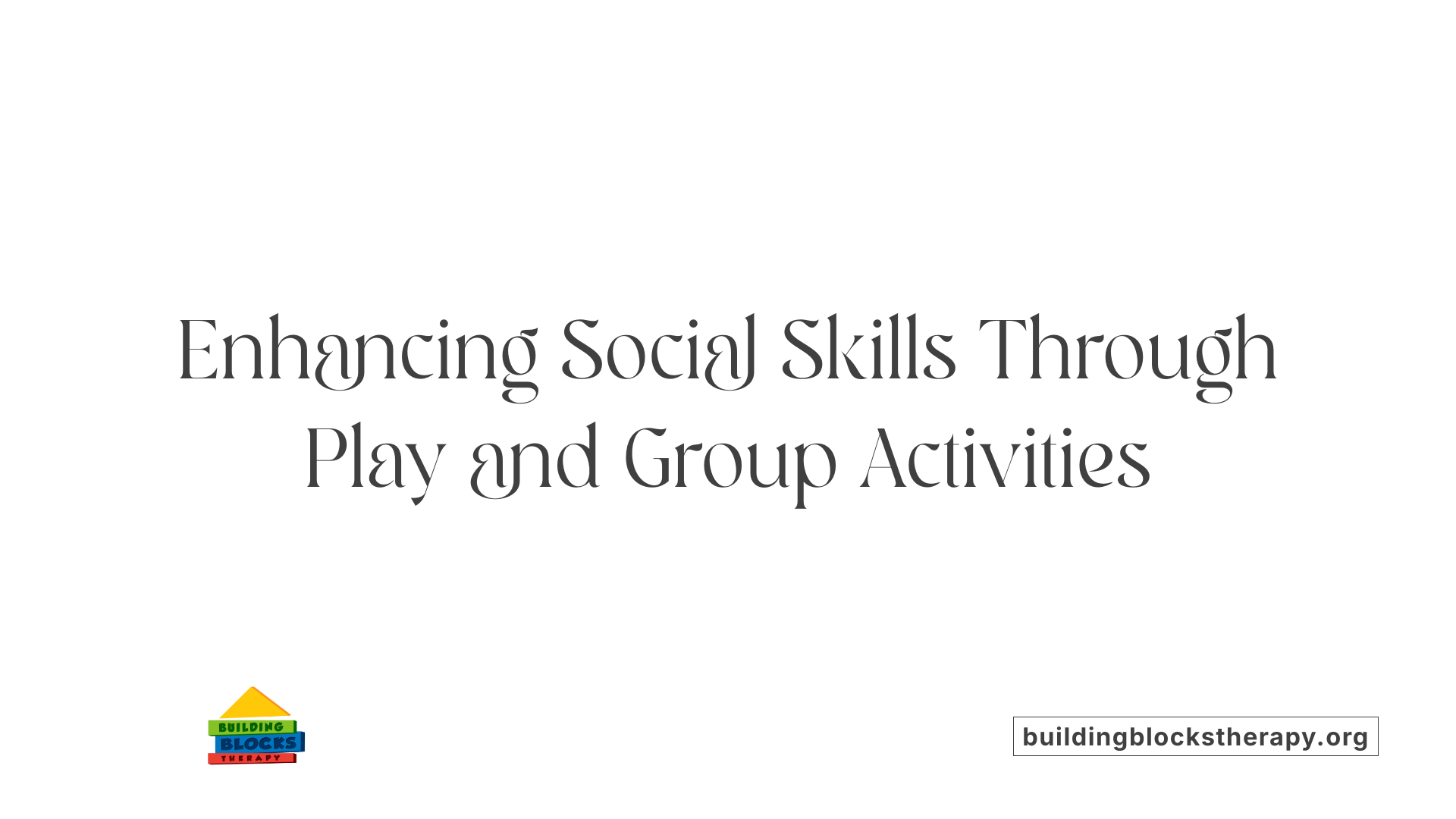Understanding the Power of ABA Therapy in Autism Support
Applied Behavior Analysis (ABA) therapy is recognized worldwide as an effective, science-based approach that helps children with autism develop essential social, communication, and behavioral skills. Early intervention, tailored programs, and a focus on positive reinforcement foster meaningful progress, empowering children to participate more fully in social environments and build cooperation skills that are vital throughout life.
The Foundations of ABA Therapy: A Scientific and Individualized Approach

What is the science behind ABA principles based on learning and behavior?
Applied Behavior Analysis (ABA) is rooted in scientific principles that focus on understanding and modifying behavior through the process of learning. It is based on theories of behaviorism, which suggest that behaviors are influenced by their consequences. Effective ABA strategies use positive reinforcement—rewarding desired behaviors to encourage their recurrence—along with prompting and fading techniques to shape speech, social skills, and adaptive behaviors.
Evidence from numerous studies confirms that applying these principles leads to meaningful improvements. For example, structured activities and interventions help children learn to interpret social cues, engage in play, communicate effectively, and reduce challenging behaviors like tantrums or aggression. As a science-based approach, ABA emphasizes data collection and analysis to track progress, allowing therapists to make informed adjustments to treatment plans continually.
How are treatment plans tailored to each child's needs?
Every child with autism presents unique strengths and challenges. ABA therapy recognizes this by developing personalized intervention plans. First, a Board Certified Behavior Analyst (BCBA) conducts comprehensive assessments to identify specific goals for each child in areas like communication, social interaction, and daily living skills.
Based on this assessment, therapists create a tailored program that includes various evidence-based strategies such as social stories, role-playing, video modeling, and peer-mediated interventions. These plans specify small, manageable steps that build progressively towards bigger skills. The goals and techniques are continually reviewed, and adjustments are made based on ongoing data collection. This individualized approach ensures that therapy targets relevant skills, optimizes learning, and adapts as the child's abilities grow.
| Aspect | Description | Example | | --- | --- | --- | | Personal Assessment | Detailed analysis of individual strengths and challenges | Social skills, language, self-care | | Custom Goals | Specific, measurable objectives tailored for the child |
How ABA Therapy Effectively Builds Cooperation and Social Skills

How does ABA therapy support children with autism in developing cooperation and social skills?
ABA therapy helps children with autism learn social and cooperation skills through personalized, evidence-based approaches tailored to each child’s unique needs. It uses proven techniques such as positive reinforcement, social stories, role-playing, and video modeling to teach children how to understand social cues and respond appropriately.
Therapists analyze behaviors carefully to determine what triggers challenging behaviors or social difficulties. They then use strategies like Discrete Trial Teaching and naturalistic teaching to promote social understanding and teach skills in real-life contexts.
These methods help children interpret social information better, manage emotions, and develop meaningful relationships. By focusing on gradually building social competence and confidence, ABA therapy supports children in participating more fully in social activities and fosters long-term emotional well-being.
Technical Strategies and Techniques in ABA for Social Skills Enhancement

How does ABA therapy facilitate social and cooperation skills through specific techniques?
ABA therapy employs a variety of carefully chosen, evidence-based methods to promote social and cooperation skills in children with autism. These techniques are designed to break down complex social behaviors into manageable steps, making learning more accessible and effective.
One core approach involves the use of social stories, social scripts, and comic strip conversations. These tools help children understand social norms and appropriate interactions by presenting social situations in a structured, visual format. For example, a social story might depict a child greeting peers, explaining the expected behavior in simple terms. Comic strip conversations can illustrate common social exchanges, allowing children to rehearse responses and recognize social cues.
In addition, role-playing and video modeling are crucial in creating experiential learning opportunities. Role-playing involves acting out real-life scenarios with therapists or peers, providing children with hands-on practice in a safe environment. Video modeling, on the other hand, shows children exact examples of desired behaviors through videos, which they can imitate to reinforce learning.
Reinforcement strategies form the backbone of ABA techniques. Positive reinforcement involves rewarding social successes—such as sharing or taking turns—through praise, tokens, or other rewards. This encourages repetition and helps solidify the new skills.
Prompt fading is another essential component, where initial guidance is gradually reduced to promote independence. For instance, prompts to make eye contact or initiate conversation are provided initially and then phased out as the child begins to perform the behaviors spontaneously.
Natural environment teaching (NET) plays a significant role in generalizing skills across various settings. Children are encouraged to practice social behaviors during play, mealtime, or other daily routines, ensuring that skills are not confined to therapy sessions.
Parent and caregiver involvement is emphasized to reinforce these skills outside of structured therapy. Through training and consistent support, primary caregivers can help transfer learned behaviors into everyday interactions.
Overall, these tailored techniques work together to foster social cooperation, communication, and emotional understanding. By providing consistent, supportive, and engaging learning experiences, ABA therapy helps children with autism develop meaningful social relationships and improve their overall social functioning.
The Role of Play and Group Activities in Developing Social Skills

How does ABA therapy support children with autism in developing cooperation and social skills?
ABA therapy is highly effective in helping children with autism improve their social and cooperation skills. It designs personalized treatment plans based on each child's unique needs, utilizing well-supported strategies rooted in scientific principles of learning and behavior. Through methods like positive reinforcement, social stories, role-playing, and visual aids, therapists teach children how to understand social cues, communicate effectively, and engage in appropriate behaviors.
These interventions often involve structured activities such as Discrete Trial Teaching, naturalistic teaching, and social skills groups. These approaches create opportunities for children to interpret social information, regulate their emotions, and foster meaningful relationships. By sequentially teaching social concepts through manageable steps, ABA helps children build confidence and competence in social environments.
Overall, ABA therapy enhances not only social understanding but also confidence, enabling children to participate more fully in social and community activities. Such improvements contribute to their long-term emotional well-being and social integration.
Empowering Families and Caregivers in Social Skills Development
What role do parents and caregivers play in ABA therapy for social skills?
Parents and caregivers are integral to the success of ABA therapy aimed at developing social skills in children with autism. They are not just passive observers but active participants who reinforce therapy strategies in daily life.
Through dedicated parent training, they learn how to implement methods like positive reinforcement, prompting, and modeling social behaviors such as greeting others, taking turns, and sharing. This training equips them with practical tools to support their child's learning in natural settings.
Regular communication with therapists allows parents to stay informed about progress and modify approaches as needed. This collaboration ensures that strategies are individualized and consistent across different environments.
Family involvement extends beyond merely following therapist recommendations. It involves creating opportunities for social interaction at home and in the community. For instance, parents can organize playdates, participate in community activities, or use structured games like Simon Says or Feelings Bingo to practice social cues and emotional recognition.
Such engagement reinforces skills learned during therapy sessions, helping to generalize these skills outside the therapy setting. It builds a supportive environment that nurtures confidence in children’s social abilities.
Moreover, active parental involvement reduces stress within the family by fostering a collaborative approach. It strengthens bonds, provides a sense of empowerment, and encourages a consistent routine—crucial for children’s developmental progress.
In summary, the role of parents and caregivers in ABA therapy encompasses education, reinforcement, social opportunities, and collaboration. Their ongoing support is vital in helping children develop the social skills needed for successful interactions with peers and adults alike.
Reinforcing social skills at home and in the community
Reinforcement of social skills in everyday life is essential for lasting development. Families are encouraged to incorporate social skill activities seamlessly into daily routines.
At home, simple practices like greeting family members, taking turns in conversations, or helping with chores can serve as opportunities for social engagement. Using visual cues, social stories, and role-playing activities helps children understand expectations and responses.
In community settings, participation in group events, playgroups, or organized sports provides real-world practice. These activities expose children to diverse social cues and help them learn appropriate responses.
Games are particularly effective tools. Cooperative games such as Charades teach non-verbal communication and perspective-taking, while board games like Feelings Bingo promote emotional recognition and turn-taking.
Integrating these games into daily routines, with patience and encouragement, reinforces the skills being developed during therapy.
Caregivers should aim to create a supportive environment that celebrates successes, offers gentle guidance during social interactions, and models appropriate behavior. Consistent reinforcement across settings ensures that social skills are generalized and become second nature.
Overall, family involvement in ongoing social skills reinforcement creates a nurturing environment that promotes independence, improves peer relationships, and fosters social confidence in children with autism.
Monitoring Progress and Ensuring Long-Term Success in Social Skill Development
What outcomes and improvements are typically seen from ABA therapy in behavior and social functioning?
ABA therapy is known for producing notable benefits in children with autism. Children often show marked improvements in their social abilities, communication skills, and behavior management. Through consistent use of evidence-based strategies like reinforcement, modeling, and role-playing, children learn to better understand social cues, engage more comfortably with peers, and develop functional communication.
One of the most important aspects of ABA therapy is its focus on data collection and regular assessments. These tools allow therapists to track progress meticulously and determine whether current interventions are effective. As children advance, their treatment plans are adjusted accordingly to target emerging needs or challenges.
With dedicated, intensive therapy—typically spanning 12 to 24 months—many children demonstrate increased social engagement and form more meaningful peer relationships. Language skills tend to improve significantly, enabling children to express their needs more clearly and comprehend others better.
Behaviorally, ABA helps reduce problematic actions such as tantrums, aggression, and self-injury by identifying underlying triggers and teaching self-regulation techniques. The culmination of these improvements contributes to greater independence, both in daily routines and social settings.
Ultimately, the benefits extend beyond the therapy environment. Children become more adaptable and socially competent across various domains, including school and community activities. They are better equipped to develop friendships, participate in group activities, and navigate social expectations, thereby enriching their overall quality of life.
Building a Brighter Future Through Compassionate, Evidence-Based Interventions
ABA therapy, grounded in scientific principles and delivered through personalized, engaging strategies, empowers children with autism to develop cooperation and social skills that are crucial for successful integration into society. Parent involvement, structured play, and consistent reinforcement help translate skills from therapy sessions into daily life, leading to improved social participation, independence, and emotional well-being. When families, therapists, and communities work together, children with autism can unlock their full potential, fostering friendships, navigating social environments confidently, and enriching their lives with meaningful connections.
References
- The Role of ABA Therapy in Early Intervention for Autism
- How ABA Therapy Helps Improve Social Skills in Children
- Social Skills in ABA Therapy: Helping Your Child Build Friendships
- Games That Teach Social Skills to Children with Autism
- How ABA Therapy Supports Child Development - Radical Minds
- The Effectiveness of ABA Therapy | Caravel Autism Health
- Benefits of ABA Therapy for Children with Autism
- 7 Surprising Benefits of ABA Therapy for Kids You Need to Know
- Applied Behavior Analysis (ABA) | Autism Speaks






